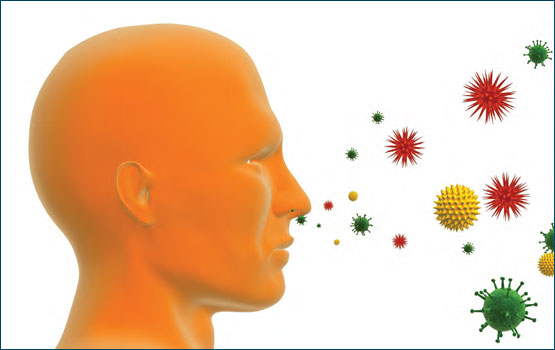Stay Allergy Free

Year after year despite numerous awareness campaigns, we wake up to a smoke filled morning on the occasion of the Bhogi festival in Tamil Nadu. The air which is already polluted gets worse that morning giving rise to innumerable problems for people with a breathing difficulty or a dust allergy. Dust allergy common in India, triggering a reaction in five of 5,400 people tested for allergies from across the country. Data of allergy tests at Dr Lal Path Labs shows that 80.3 percent of people were allergic to dust.
Allergy triggers in India are quite different from those of the west. “While dust causes 80 percent of allergies in India, it is the second common allergen in the USA and Europe, where pollen allergy accounts for 20 percent,” says Dr Arvind Lal, CMD, Dr Lal Path Labs, which collected samples from its 650 centers across India. Data from allergy tests conducted between October 2013 and January 2014 showed that many people were sensitive to more than one allergen. As many as 27.6 percent had grass allergy (the allergen being Bermuda grass), and 21 percent were allergic to one or more foods such as peanut, chocolate, soybean, rice, wheat, fish, shrimp and milk, while 19.6 percent were allergic to mould (caused by aspergillus and alternaria fungi).
Allergy symptoms include nasal congestion, sneezing, runny nose, itchy throat and eyes, headache, sinus pain or ear pain. General physician, Dr Balakrishnan says, "Allergies happen when the immune system mistakenly believes that something the person ate or came in contact with is harmful to the body. To protect the body, the immune system produces IgE antibodies to counter that allergen. IgE antibodies then trigger mast cells (allergy cells in the body) to release chemicals into the bloodstream. One of these chemicals is histamine. Histamine acts on the eyes, nose, throat, lungs, skin or gastrointestinal tract and causes symptoms of an allergic reaction. Once the body has made antibodies against a certain allergen, these antibodies easily recognise the allergen. Each time the person comes in contact with the allergen, the body releases histamine into the bloodstream again, creating allergy symptoms.” According to Dr Balakrishnan, the following are the common allergies that affect people:
Dust allergy : Dust allergy symptoms are unmanageable sneezing, a runny or stuffed nose, itchy, watery eyes, and in some cases, a small red coloured rash located on a part of your body such as your stomach or your upper arm.
Pollen allergy : During spring and summer, pollen is released from flowers, weeds and grass into the air which enters the nose and throat, triggering a type of seasonal allergy. Although pollen allergy symptoms are similar to a cold, you can tell the difference, because a cold is associated with a thicker nasal secretion, sore throat, hoarseness, and may be a fever. Also, a cold tends to get better fairly quickly.
Contact allergy : This allergy occurs when the skin comes into contact with metals (gold-silver oxidised jewellery), leather (wrist watch), or synthetic fibers (clothing such as undergarments). The allergy usually occurs within 30 minutes after exposure to the allergen, although the symptoms may take several hours to appear. Common allergens include latex, rubber, nickel, preservatives, dyes, medications, fragrances and cosmetics such as hair dye and perfume.
Sun allergy : Sun allergy is having small white patches due to sunlight on the exposed areas of the body. In addition, there is a syndrome known as "sun drunk" which affects some children who suffer from a sun allergy.
Food allergies : Symptoms include itching in the mouth, hives, itching or eczema, redness around the mouth, swelling of the lips, face, tongue, throat or other parts of the body, wheezing, nasal congestion or difficulty in breathing, pain in the lower abdominal area, diarrhea, nausea or vomiting, and dizziness or fainting.
Foods known to cause allergies : It is observed that many infants under one year of age are allergic to cow's milk, making it the most common food allergy. The substitute to cow's milk can be soya milk. In adults, the most common foods that cause an allergic reaction are shellfish (shrimp, crayfish, lobster and crab), soybean, peanut, honey, milk, egg, Brazil and hazel nuts, almond, walnut, soya and wheat.

Location
Thalambur, OMR
Unit Type
Villas
No. of Units
6
Built-up Area
2482 - 2666 Sq.ft
Land Area
2720 Sq.ft
Handover
Ready for possession
Contact us : +91 - 93 6011 6011